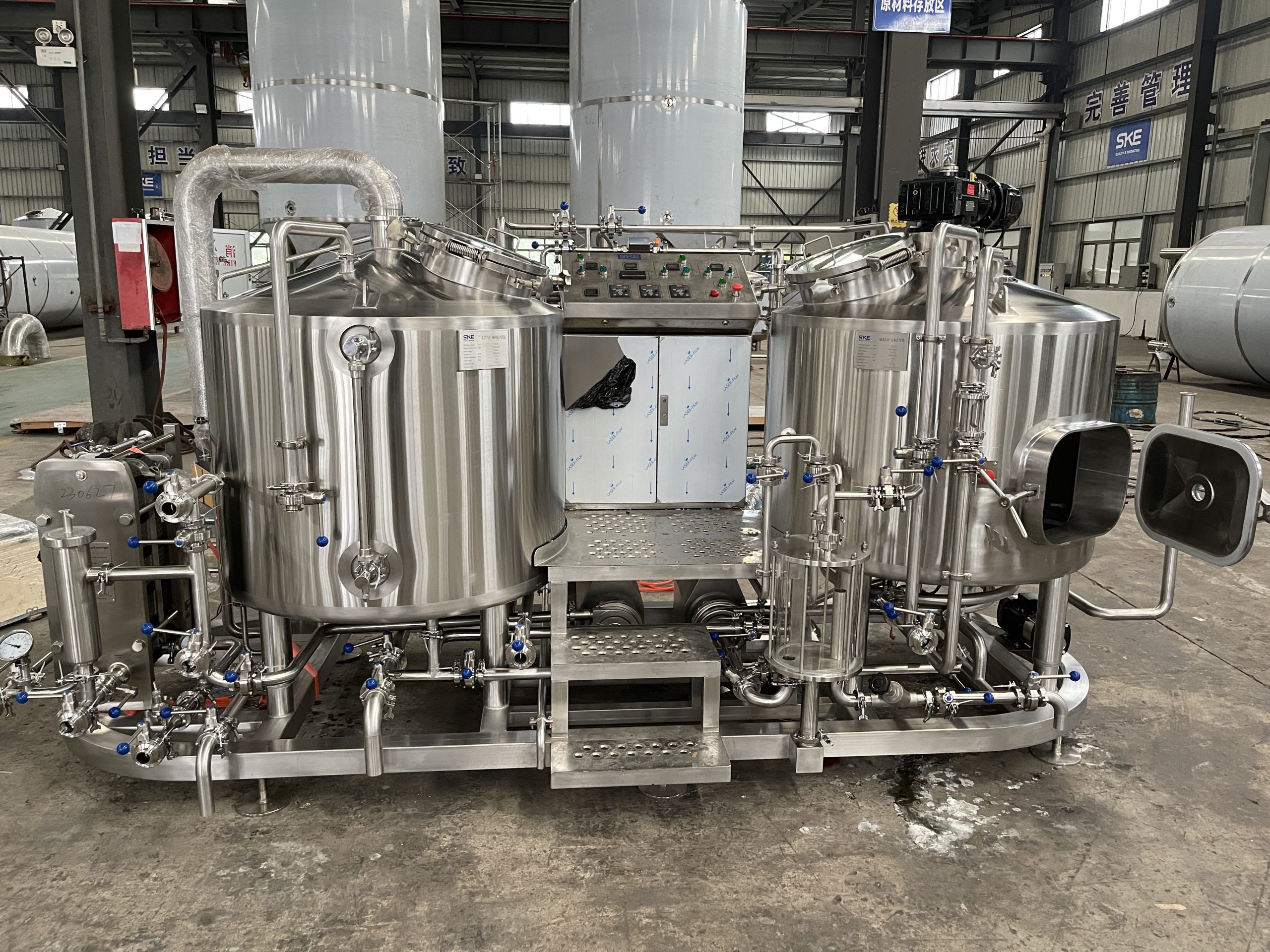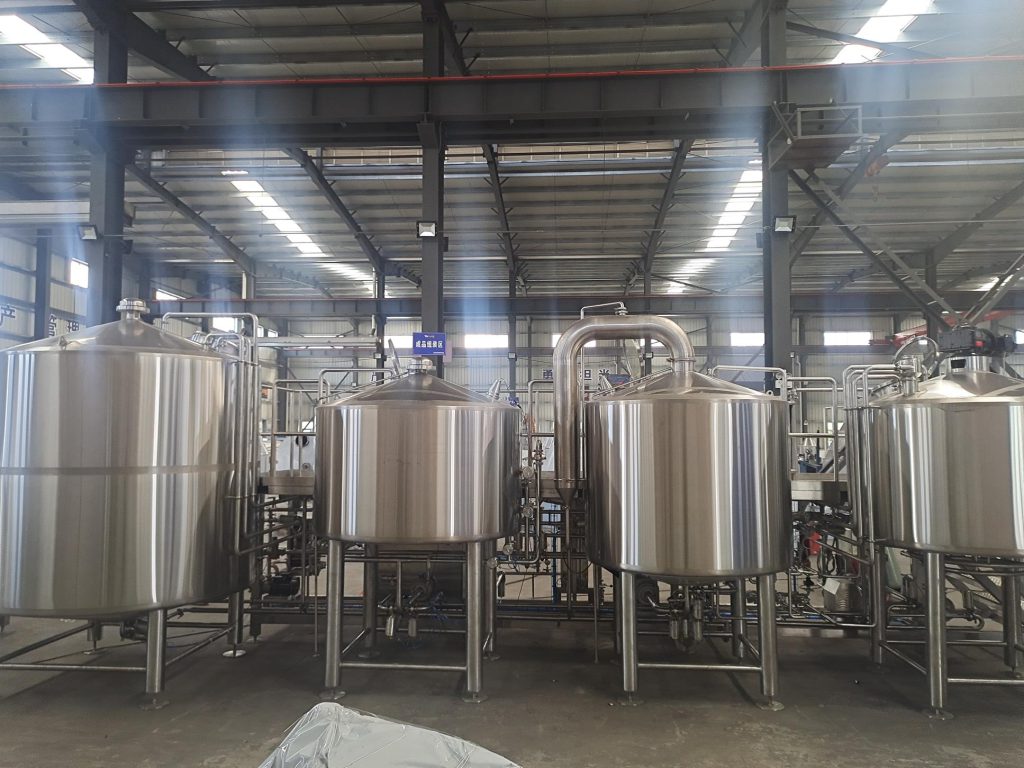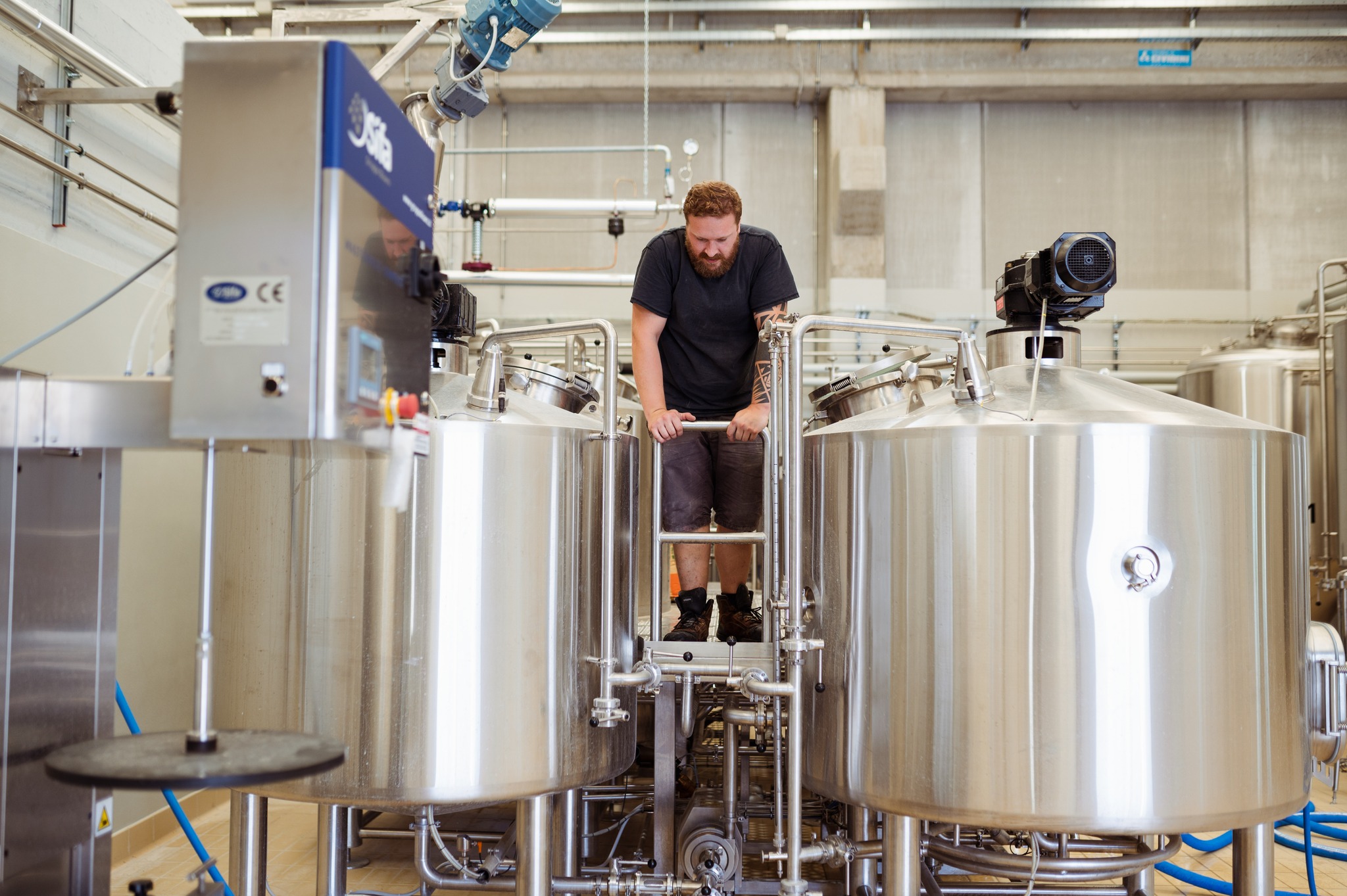Introduction

Choosing the best double bucket mash lauter tun for your brewing needs can be a daunting task. With numerous options available, it is crucial to understand the key factors that will influence your decision. This comprehensive guide will delve into the essential aspects of selecting the perfect double bucket mash lauter tun, ensuring that you make an informed choice that suits your brewing style and preferences.
Understanding the Double Bucket Mash Lauter Tun
The double bucket mash lauter tun is an essential piece of equipment for homebrewers and small-scale commercial brewers. It combines the functions of mashing and lautering in one unit, simplifying the brewing process. Here’s a detailed look at its components and functions:
Components of a Double Bucket Mash Lauter Tun
- Mash Bucket: This is where the mashing process occurs. The grains are mixed with hot water to convert starches into fermentable sugars.
- Lauter Bucket: This bucket is used for lautering, the process of separating the wort from the spent grains.
- False Bottom or Manifold: A perforated plate or a network of tubes that allow the wort to drain while keeping the grains contained.
- Spigot: A tap or valve at the bottom of the lauter bucket for easy drainage of the wort.
Functions of the Double Bucket Mash Lauter Tun
- Mashing: The first step in brewing, where crushed grains are mixed with water to activate enzymes that convert starches to sugars.
- Lautering: The separation of the sugary liquid (wort) from the spent grains.
Key Factors to Consider
When selecting the best double bucket mash lauter tun, there are several critical factors that you must take into account. These factors will influence not only the efficiency of your brewing process but also the quality of your final product. Here’s an in-depth look at the most important considerations:
Material
The material of your double bucket mash lauter tun plays a crucial role in its durability, heat retention, and ease of cleaning. The most common materials used are plastic and stainless steel.
- Plastic: Plastic double bucket mash lauter tuns are lightweight and affordable, making them an attractive option for beginners or those on a budget. However, they may not be as durable as metal options and can retain odors and stains over time. They are also less effective at retaining heat, which can impact the consistency of your mash temperatures.
- Stainless Steel: Stainless steel tuns are highly durable and resistant to corrosion, ensuring a longer lifespan. They are also easy to clean and sanitize, which is essential for maintaining the quality of your brews. Stainless steel is excellent at retaining heat, which helps maintain stable mash temperatures, a critical factor for enzymatic activity during the mashing process. Although more expensive, stainless steel is often considered the best choice for serious brewers due to its reliability and performance.
Size and Capacity
The size and capacity of your double bucket mash lauter tun are pivotal in determining how much beer you can brew in a single batch. Selecting the right size ensures you can handle your desired batch volumes and grain bills without any issues.
- Batch Size: Consider the volume of beer you typically brew. Homebrewers usually work with batch sizes ranging from 5 to 10 gallons, while small-scale commercial brewers might need larger capacities. Ensure your tun can comfortably accommodate the largest batch size you plan to brew.
- Grain Bill: The grain bill refers to the total weight of grains used in your brewing recipe. A larger grain bill requires a tun with enough space to allow proper mixing and mashing. Overcrowding the tun can lead to inefficiencies and poor extraction, affecting the flavor and quality of your beer.
Insulation
Insulation is critical for maintaining the correct temperature during the mashing process. Consistent temperatures are essential for optimal enzymatic activity, which directly impacts the efficiency and quality of the mash.
- Double-Walled Construction: Tuns with double-walled construction are designed to retain heat more effectively. This feature helps maintain a stable mash temperature without frequent adjustments.
- Insulating Jackets: Some tuns come with insulating jackets or allow for aftermarket additions. These jackets provide an extra layer of insulation, further improving heat retention and stability.
Ease of Cleaning
Brewing can be a messy process, and ease of cleaning is an important consideration to ensure your equipment remains sanitary and in good condition.
- Removable Components: Look for tuns with parts that can be easily detached for thorough cleaning. Removable false bottoms, spigots, and lids make it easier to access all areas of the tun and remove any residue.
- Smooth Surfaces: Tuns with smooth surfaces and minimal nooks and crannies are easier to clean and less likely to harbor bacteria or yeast. This feature helps maintain the quality of your brews and extends the lifespan of your equipment.
Cost
Your budget will inevitably play a significant role in your decision-making process. While it may be tempting to opt for the cheapest option available, it’s important to consider the long-term benefits of investing in a high-quality double bucket mash lauter tun.
- Initial Investment vs. Long-Term Value: A higher upfront cost can often translate to better performance, durability, and ease of use. Investing in a high-quality tun can save you money in the long run by reducing the need for frequent replacements and repairs.
- Balance Features and Budget: Evaluate the features that are most important to you and find a tun that offers the best balance between cost and functionality. Remember that the cheapest option may not always provide the best value if it lacks essential features or durability.
Additional Features
Some double bucket mash lauter tuns come with additional features that can enhance your brewing experience.
- Integrated Thermometers: Built-in thermometers allow you to monitor mash temperatures without needing separate equipment, ensuring more precise control over the mashing process.
- Recirculation Ports: These ports facilitate continuous recirculation of the wort, improving clarity and efficiency during lautering.
- Adjustable Spigots: Spigots that can be adjusted or removed make it easier to control the flow of wort and simplify cleaning.
Comparing Different Models
To help you make an informed decision, here is a comparison of some popular double bucket mash lauter tuns:
| Model | Material | Capacity | Insulation | Price |
|---|---|---|---|---|
| Brewer’s Best Tun | Plastic | 10 gallons | None | $80 |
| SS Brewtech Tun | Stainless Steel | 10 gallons | Double-Walled | $300 |
| Igloo Cooler Tun | Plastic | 5 gallons | Insulated Cooler | $120 |
| Grainfather Tun | Stainless Steel | 8 gallons | Insulating Jacket | $350 |
| Homebrew Tun | Plastic | 6 gallons | Removable Jacket | $150 |
How to Use a Double Bucket Mash Lauter Tun

Using a double bucket mash lauter tun involves several steps. Here’s a basic guide:
- Heat the Water: Bring the required amount of water to the desired mashing temperature.
- Add Grains: Mix the crushed grains with the heated water in the mash bucket.
- Mash Rest: Allow the mixture to rest for the specified time to convert starches into sugars.
- Recirculate: Gently recirculate the wort to clarify it.
- Sparge: Rinse the grains with hot water to extract additional sugars.
- Drain: Open the spigot to drain the wort into your boil kettle.
Troubleshooting Common Issues
Even with the best double bucket mash lauter tun, you may encounter some challenges during the brewing process. Troubleshooting these common issues can help ensure a smooth and efficient brewing experience. Here are some of the most frequent problems brewers face and practical solutions to address them:
Stuck Sparge
A stuck sparge is a common issue where the wort stops flowing or flows very slowly during the lautering process. This can be caused by a variety of factors, including grain bed compaction and clogging of the false bottom or manifold. Here are some strategies to resolve and prevent a stuck sparge:
- Stir Gently: If you encounter a stuck sparge, try gently stirring the grain bed with a mash paddle to break up any clumps and redistribute the grains. Be careful not to stir too vigorously, as this can create more fine particles that can exacerbate the problem.
- Adjust Flow Rate: Regulate the flow rate of the wort during lautering. A slower flow rate can help prevent the grain bed from compacting too much. Gradually increase the flow as the wort starts to clear.
- Use Rice Hulls: Adding rice hulls to your mash can improve wort flow by creating more space within the grain bed, reducing the likelihood of compaction. Rice hulls are neutral in flavor and won’t affect your beer’s taste.
- Check the Manifold: Ensure that the false bottom or manifold is properly installed and not clogged with grain particles. Regularly inspect and clean these components to maintain optimal performance.
Temperature Fluctuations
Maintaining a consistent mash temperature is crucial for proper enzymatic activity and efficient starch conversion. Temperature fluctuations can negatively impact your mash efficiency and the quality of your wort. Here are some tips to maintain stable temperatures:
- Insulate Properly: Ensure that your double bucket mash lauter tun is well-insulated. Using additional insulating materials such as foam or thermal blankets can help retain heat more effectively. Some tuns come with built-in insulation, which is a great feature to look for.
- Monitor Closely: Regularly check the mash temperature with a reliable thermometer. Digital thermometers with probes are particularly useful for accurate and continuous monitoring. If you notice a drop in temperature, you can add hot water or apply external heat to bring it back to the desired range.
- Preheat Your Tun: Before adding the grains, preheat your mash tun by adding hot water and letting it sit for a few minutes. This helps stabilize the temperature and minimizes the initial heat loss when you start mashing.
Low Efficiency
Low efficiency in brewing can result in poor sugar extraction, leading to lower-than-expected original gravity readings. This issue can be caused by various factors, including improper mashing techniques, insufficient sparging, and equipment limitations. Here are some ways to improve your efficiency:
- Grind the Grains Correctly: The crush of your grains plays a significant role in extraction efficiency. Ensure your grains are crushed to the correct consistency, with the husks mostly intact and the inner starches exposed. Too fine a grind can lead to a stuck sparge, while too coarse a grind can reduce sugar extraction.
- Mash Thoroughly: Ensure that your mash is well-mixed and that all grains are fully submerged. Stirring the mash periodically can help maintain an even temperature throughout the grain bed and improve enzymatic activity.
- Sparge Effectively: Sparging is the process of rinsing the grains with hot water to extract remaining sugars. Ensure you sparge thoroughly and evenly, using enough water to fully rinse the grains. Fly sparging (continuous sparging) and batch sparging (sequential sparging) are two common methods, and each has its own set of best practices.
- Check pH Levels: The pH of your mash can impact enzyme activity and overall efficiency. Aim for a mash pH between 5.2 and 5.6. Using brewing salts or acids can help adjust the pH to the desired range.
Inconsistent Wort Clarity
Clarity issues in wort can affect the final appearance and taste of your beer. Achieving clear wort is essential for producing high-quality brews. Here are some steps to improve wort clarity:
- Recirculate the Wort: During the lautering process, recirculate the first runnings of the wort back into the mash tun until it runs clear. This helps filter out grain particles and improves overall clarity.
- Use a Vorlauf: Vorlaufing is the process of recirculating the wort through the grain bed. This helps set the grain bed and removes fine particles. Perform this step slowly and gently to avoid disturbing the grain bed.
- Utilize Fining Agents: Adding fining agents such as Irish moss or Whirlfloc tablets during the boil can help coagulate proteins and other haze-causing compounds, improving wort clarity.
Equipment Maintenance and Upkeep
Proper maintenance of your double bucket mash lauter tun is crucial for its longevity and performance. Regular cleaning and inspections can prevent many common issues and ensure your equipment remains in top condition:
- Clean Thoroughly: After each brew session, disassemble your tun and clean all components thoroughly with a suitable cleaner. Avoid using abrasive materials that can scratch and damage surfaces.
- Inspect for Wear and Tear: Regularly check for signs of wear and tear, such as cracks in plastic components or corrosion in metal parts. Replace any damaged parts promptly to avoid affecting the brewing process.
- Store Properly: Store your tun in a clean, dry place to prevent contamination and damage. Ensure all components are dry before storage to prevent mold and mildew growth.
Conclusion
Choosing the best double bucket mash lauter tun requires careful consideration of several factors, including material, size, insulation, ease of cleaning, and cost. By understanding these elements and comparing different models, you can select the perfect tun to enhance your brewing process. Remember to follow best practices for using and maintaining your equipment to achieve the best results in your brewing endeavors.
FAQ
What is a double bucket mash lauter tun?
A double bucket mash lauter tun is a brewing device that combines the processes of mashing and lautering in one unit, simplifying the homebrewing process.
Why should I choose a stainless steel tun?
Stainless steel is highly durable, easy to clean, and resistant to corrosion, making it a preferred choice for serious brewers.
How can I prevent a stuck sparge?
To prevent a stuck sparge, stir the grains gently, adjust the flow rate, and ensure the manifold or false bottom is not clogged.
What size tun do I need?
The size you need depends on your batch size and grain bill. Ensure the tun can comfortably accommodate your largest grain bill.
How do I maintain the correct mash temperature?
Proper insulation, frequent temperature monitoring, and using additional insulating materials can help maintain the correct mash temperature.

